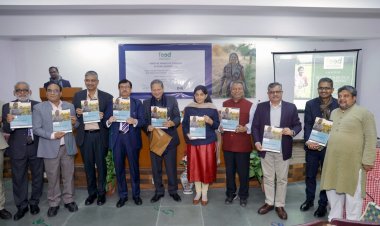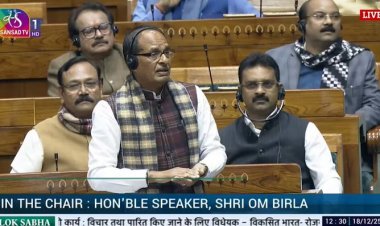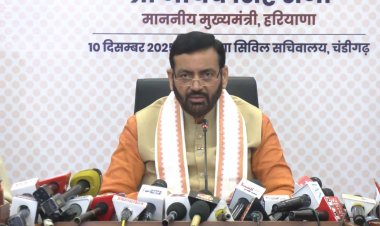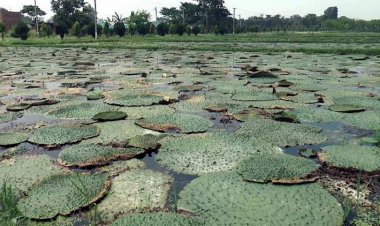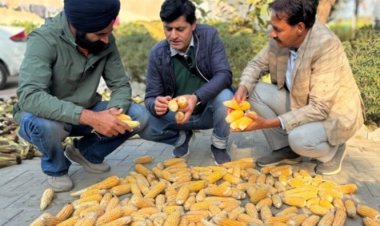Financial resources effective in increasing agri output by 24pc, reducing climate risk by 16pc
An important recommendation of the paper is that 40 percent of financial resources should be allocated to climate action. Along with this, resources used for capital investment in the short term have a greater advantage over short-term financial resources used for expenses.
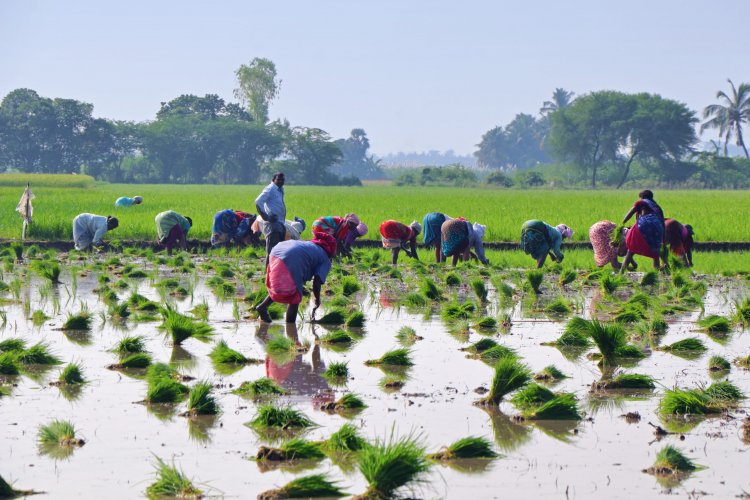
The availability of better financial resources has the potential to increase agricultural production by 24 percent. At the same time, financial resources have the potential to reduce risks like climate change by 16 percent. This interesting and important fact has come to the fore in a policy paper ‘Can Finance Mitigate Climate Risks in Agriculture’ of the National Institute of Agricultural Economics and Policy Research (NIAP) of the Indian Council of Agricultural Research (ICAR).
This paper presents the above results after examining the entire issue on the basis of ground facts, keeping finance at the center. It has been written by Pratip S Birthal, director of the institute, Devesh Roy, senior research fellow at Washington-based IFPRI, Javeriah Hazrana, postdoctoral scholar at Ohio State University, and KJS Satyasai, former chief general manager of NABARD.
It states that the impact of financial resources on agricultural production can be assessed. Due to this, it is possible to increase productivity by 24 percent while it reduces the risk of decreasing productivity by 16 percent. But its impact is directly related to the availability of financial resources through the organized sector or the unorganized sector. Financial resources available from the organized sector are twice as effective as those obtained from sources in the unorganized sector. At the same time, the resources available from the organized sector are more effective in reducing risks. Although both also complement each other.
An important recommendation of the paper is that 40 percent of financial resources should be allocated to climate action. Along with this, resources used for capital investment in the short term have a greater advantage over short-term financial resources used for expenses. At present the ratio of short-term and long-term resources in agriculture is 3:2.
Whereas it should be the opposite. The weak capital formation situation in the agricultural sector and the financial resources required for risk-taking can be improved by increasing long-term resources.
The paper highlights that women and small farmers are at a disadvantage in terms of the availability of financial resources in the rural financial market, whereas it is they who need more financial resources. Along with this, a 30 per cent increase is required for diversification of sources of income through horticulture crops, animal husbandry and other non-crop activities, which is necessary for IT, inputs, crop insurance and other services.
The paper states that given the increasing risks to agriculture due to climate change, policy changes are needed to emphasize management. About the steps required for this, it has been said that India's agricultural policy and credit policy are mainly focused on increasing production. But in view of the increasing risk of climate change, it should be considered agricultural finance and credit. Need to be linked with planning. Whereas through climate-smart intervention, specific area-based measures will have to be prepared.
Financial institutions need to work with all partners, communities and research. There is a need to work together with institutions, which include voluntary groups, extension agencies, nonprofits, government organizations, agri-business companies and institutions working at the Panchayat level. Through this, effective measures can be taken to reduce risk based on agro-climatic conditions.
Financial institutions are required to respond to the financial needs of the farming community especially the needs of small farmers. Keeping this in mind, methods should be adopted to remove discrimination that can be done by the market. For this, there is a need to find ways to reduce the financial costs that increase due to collateral
needs and transaction costs incurred. Small farmers can be helped through investment in resources at the community level.
The paper says a large portion of private-sector agri-tech investment will be engaged in post-harvest management and retail activities only. On the steps to reduce climate risk, investment can be made. For this, agribusiness firms, start-ups, cooperatives and FPOs, a compromise has been suggested.
Citing the government's recent Carbon and Green Credit National Market, the paper said it has been observed that the concerned partners can use technologies to reduce climate change risks and conserve natural resources. In such a situation, financial assistance to farmers and other stakeholders and resource availability to financial institutions can play an important role in this market.
Estimating the benefits of climate-smart interventions is a complex matter because crops involve many types of systems related to productivity work. Besides, the existing standards for assessing the advantages and disadvantages of climate-smart steps are not yet very reliable.
In this situation, agricultural insurance is an important measure of risk protection. But the premium paid for this crop production should take place at the beginning of the season and this is the time when farmers are struggling with their limited financial resources. Farmers struggled with resources to meet many other needs. Insurance was mandatory for farmers taking loans from banks and financial institutions till 2020.
One reason for this was the transaction cost of insurance companies also had to be kept low. But now this necessity is over. Taking insurance from the company may have adverse effects too.



 Join the RuralVoice whatsapp group
Join the RuralVoice whatsapp group



















